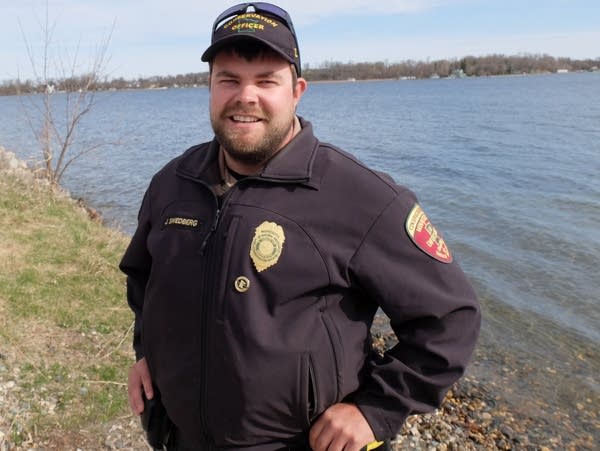More boaters mean more threats to loons on Minn. lakes

Go Deeper.
Create an account or log in to save stories.
Like this?
Thanks for liking this story! We have added it to a list of your favorite stories.
On a busy Saturday in July, Minnesota Department of Natural Resources conservation officer Jacob Swedberg was patrolling Big Floyd Lake near Detroit Lakes when he spotted a loon.
As he watched, a jet ski turned sharply toward it, then chased the bird as it raced across the lake, trying to get up enough speed to take off.
"The loon was just about out of the water when the jet ski finally turned away from it,” Swedberg said. “So, of course, I go flying over there and was like, ‘What the heck are you doing?’”

The teenage operator told Swedberg that her younger brother wanted a better look at the loon.
Turn Up Your Support
MPR News helps you turn down the noise and build shared understanding. Turn up your support for this public resource and keep trusted journalism accessible to all.
Swedberg said he told the pair that watching the loon was OK — but chasing it was not.
It's not the first time Swedberg has encountered people bothering loons on Minnesota lakes.
Earlier this summer, he cited several people on a pontoon who had followed a loon. One of the people aboard the boat actually jumped into the water and started swimming after it, he said.
Swedberg’s advice: "Treat loons like you treat a swimmer,” he said. “They're not a person, but they still are a living creature."
Minnesota is home to roughly 12,000 common loons, more than any other state besides Alaska.
With the COVID-19 pandemic driving more people to enjoy outdoor recreation this summer, there are more people on Minnesota lakes — which means a greater chance for conflict between boaters and wildlife. And that can mean problems for Minnesota's iconic black-and-white state bird.
"Just the increased amount of boat traffic will put loons in danger because they dive and they're swimming a lot of times just under the surface of the water,” said Lori Naumann, information officer for the DNR's nongame wildlife program. "They can get hit by propellers and just hit by boats, because of their proximity to them."
Naumann said the DNR does get some complaints about people intentionally harassing loons. But more common are people in boats or other watercraft who pose a threat to the birds because they're driving too fast, or aren't aware of their surroundings.
Loons spend most of their time in the water, swimming or diving, and even nest right along the water's edge.
"Don't go zipping right by them because there could be its mate or a chick right nearby, right under the surface of the water that you don't see,” Naumann said.

Volunteer loon monitor Sheila Johnston watches and photographs loons from her kayak at a respectful distance on Upper Gull Lake near Brainerd, Minn.
But not everyone shows the same respect, she said — she has seen high-powered boats ignoring no-wake signs in nesting areas, and separating loons from their chicks.
"It's not so much that I'm seeing people chasing them,” she said. “But there's just so much carelessness around them.”
Experts say if you get too close to a loon, it likely will let you know. Erica LeMoine, coordinator of the LoonWatch program at Northland College in Ashland, Wis., described a typical loon response, called a penguin dance.
"They'll sort of run across the water on their feet,” she said.
“They're actually expending a lot of energy to do this. They're not doing it for our entertainment. They're doing it because they're scared, and they're having a nervous moment."
Boats and propellers pose an even greater danger to the fuzzy gray chicks, because they can't dive as deep as adults, LeMoine said.
"Because they're so buoyant, they come back up like little corks,” she said. “So if people are moving very fast in a boat and don't notice them or think that it's OK to chase them, it's not. You can run over them and kill the chicks. You can kill the adults."
Loons also will use their voice to let boaters know when they're feeling threatened. One of their distinct, eerie calls, known as the tremolo, sounds like a quavering laugh, but actually is the call loons make when they’re disturbed or excited.
LeMoine advises people in boats or other watercraft to keep a safe distance — about 200 feet — from loons, and not to drive too fast or create a large wake near them or the shore.
And avoid leaving anything behind, she said. Loons often die after getting tangled up in fishing line or swallowing lead sinkers. Lead poisoning is a leading cause of mortality among loons and other waterfowl.


